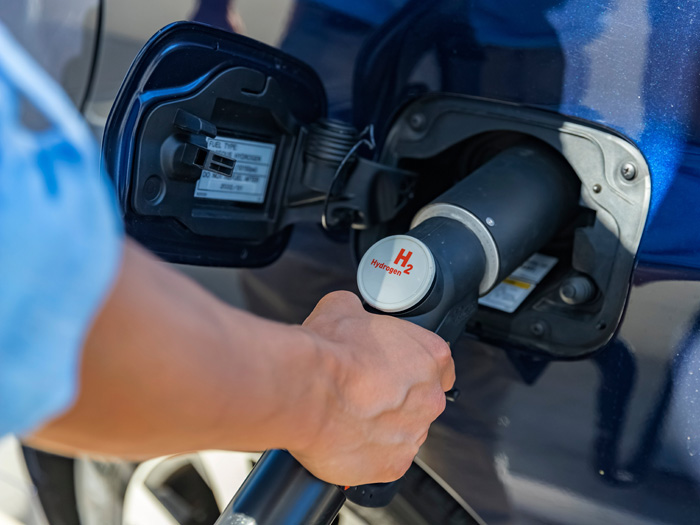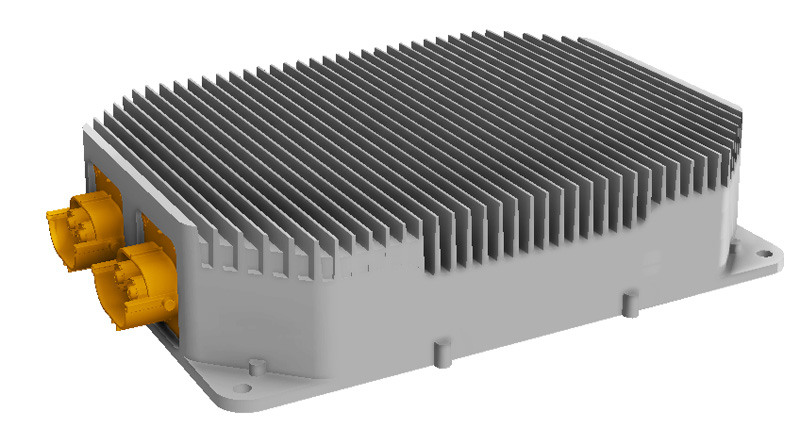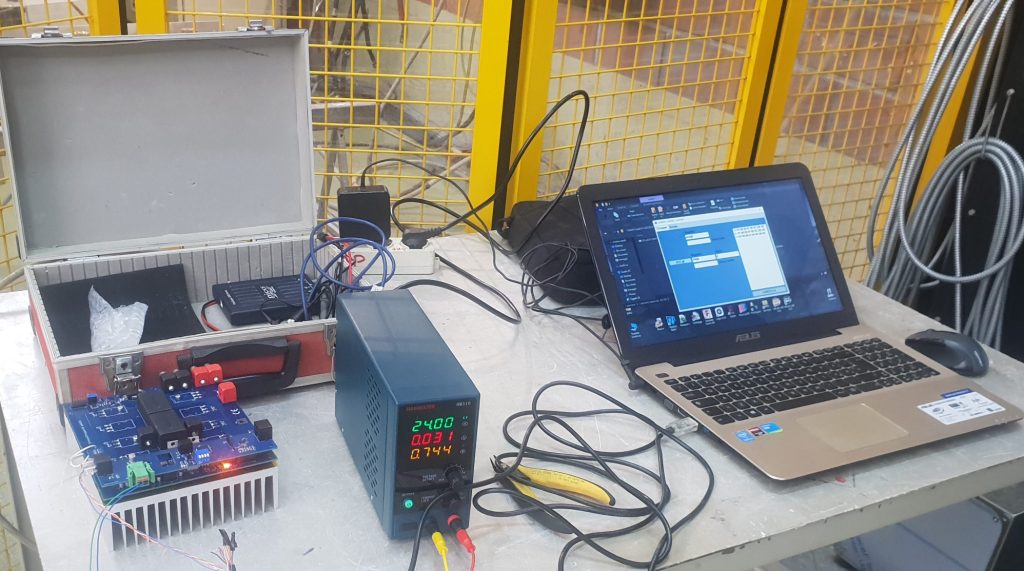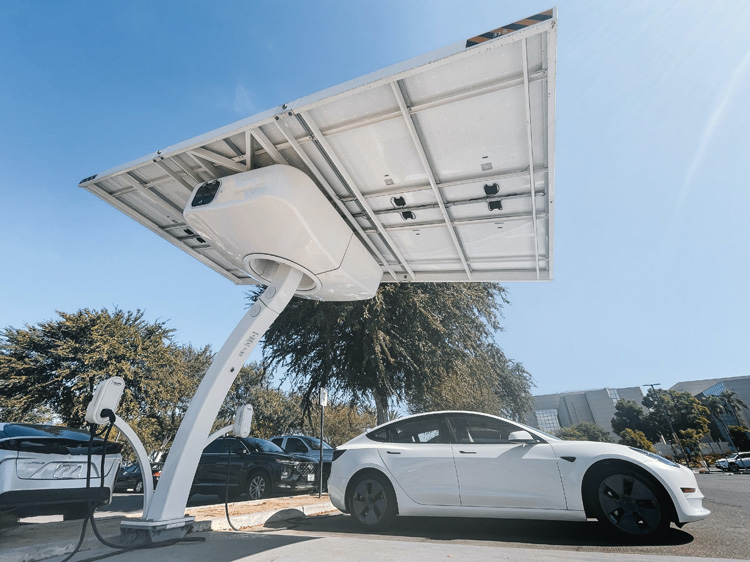FUEL CELL VERSUS BATTERY TRUCKS
HOW CAN AUTOMOTIVE MANUFACTURERS CREATE A ZERO EMISSION FUTURE?
By 2040, all new heavy goods vehicles (HGVs) sold in the UK must be zero-emission. Advances in green energy technology mean this is possible, but automotive manufacturers are still in disagreement about what type of power source is best. In this article, Simone Bruckner, managing director of resistor manufacturer Cressall, explains the pros and cons of fuel cells and battery power, and what these mean for electrifying HGVs.
There are two main types of electric vehicle, categorised by their power source. Battery Electric Vehicles (BEVs) rely on a lithium-ion battery for power. Fuel Cell Electric Vehicles (FCEVs) on the other hand use a fuel cell, which combines hydrogen gas with oxygen to generate electricity.
HYDROGEN POWER
Hydrogen is the most abundant element in existence, so future supply is not an issue. Hydrogen power also has a much higher energy density than batteries, at around 35,000 watts per kilogram of hydrogen, while lithium-ion batteries only have around 200 watts per kilogram.
This increased energy density allows FCEVs to travel distances comparable to petrol or diesel vehicles, and up to 100 miles further than BEVs. For HGVs in particular, it also means that much heavier payloads are possible, with the ability to carry an extra two tonnes or more depending on the vehicle.
The main problem with hydrogen fuel remains with its production. Similar to the way we often refer to more environmentally friendly processes as “green”, hydrogen is colour-coded based on its method of production. Most of the hydrogen produced currently is defined as “grey”.
Grey hydrogen is generated using methane from natural gas, producing about ten times more carbon dioxide than hydrogen. Recapturing the carbon dioxide produced is possible, but it’s still not a perfect solution, only being able to capture up to 80 per cent of the generated carbon.
The ideal type of hydrogen is green, produced by separating hydrogen and oxygen molecules in water using electricity. Provided that the source of this electricity is renewable, this is the most environmentally friendly form of hydrogen. At present, the cost of production is the main barrier for this method, though it is expected to fall to a level that’s more competitive with grey hydrogen by 2035.
REFUELLING AND RECHARGING
Refuelling remains a hot topic for FCEVs. In terms of refuelling time, FCEVs have a huge advantage over BEVs, taking around three to five minutes to refuel. This means that lorries can get straight back onto the road with minimal downtime, without hampering delivery expectations.
In contrast, BEVs can take anywhere between 30 minutes to ten hours to recharge, depending on the voltage of the charger and the battery size. Considering the battery size required to power a HGV compared to a passenger car, it’s likely that most HGV charging times will sit on the higher end of the spectrum on a standard charger.
Rapid chargers operating at a higher voltage can be installed at HGV depots instead, giving access to much faster recharging times, though they will still not be as quick as FCEVS to refuel. It’s important to note, however, that UK legislation requires drivers to take regular breaks regardless.
By law, drivers should take a 45-minute break for every four and a half hours driving, and drive for a maximum of ten hours per day. Factoring in these numbers, the slower refuelling time of a BEV may not be as much of an issue as once thought, provided it can refuel sufficiently to reach the next point in its journey.
The abundance of charging points means that a BEV is never too far away from a top up. In contrast, there are only around 15 stations in the UK currently providing hydrogen fuel. Choosing FCEVs right now, therefore, means that careful route planning is required to ensure the lorry can safely reach a station.
Encouragingly, investments are being made in this area. Bosch has committed to set up 4,000 hydrogen fuelling points worldwide by 2030, and as the cut-off deadline looms for new petrol and diesel vehicles, it’s likely that similar schemes will follow.
The problems with lithium power
Most BEVs are powered by lithium-ion batteries. These have decreased substantially in price since they first started appearing in electric vehicles, making electric lorry fleets a lot more financially viable.
However, this downward pricing trend is not expected to last. High global demand of lithium is predicted to result in chronic shortages by 2030. While there is still enough lithium in the ground, lacking infrastructure means that not enough of it can be mined to meet modern demands for much longer.
Another issue with BEVs is their heavy reliance on the power grid, as more than half of the energy on the grid is provided by non-renewable sources. Grid reliance can also be tricky in the cases of power cuts and blackouts. Overnight power disruption may result in a half-empty battery the next day, having a knock-on effect to scheduled deliveries and supply chains.
PRESERVING BATTERY LIFE
In response to these issues, manufacturers should be looking for ways to ensure that their HGVs can get the maximum value out of their fuel. Preserving battery life can help to ease the pressure on the lithium supply, as well as lower overall fuel demand.
One of the ways that battery life preservation can be achieved is through regenerative braking. In an electric vehicle, the electric motor runs in two directions. The forward direction drives the movement of the wheels and the vehicle. Reversing the motor direction takes the excess energy away from the braking system and puts it back into the battery. Using regenerative braking, the kinetic energy from braking that would otherwise be wasted can be saved and reused elsewhere.
Batteries only have a limited capacity though, and a full battery has nowhere for the excess electricity to go. This can lead to component damage as well as overheating. To dissipate the excess electricity safely and prevent this from happening, a dynamic braking resistor, or DBR, can be used.
DBRs are also useful in ensuring that emergency braking can be done safely, which is essential in heavier vehicles. FCEVs struggle with fast acceleration and deceleration, as fuel cell output is not consistent due to the method of generating electricity. The solution is to install cells that have a higher output than what is needed, meaning that there is always sufficient energy available, and using the DBR to safely remove the excess.
Choosing a lightweight DBR like Cressall’s EV2 helps to reduce the overall weight of a HGV, maximising its payloads. The EV2 also has a modular design, allowing multiple modules to be combined to give up to 125 kW in one single unit, which could be then put in parallel or series with others for higher power for safe emergency braking. And at only a tenth of the size of conventional convection cooled DBRs, the liquid cooled EV2 provides a compact solution to safer braking.
It’s clear that there’s still a long way to go to providing cost-effective and sustainable fuel for heavy vehicles. But boosting battery life can go a long way in meeting overall demand. By implementing technologies like regenerative braking, even the largest of road vehicles can benefit from cleaner, greener fuel technologies.




